News
News / 03/07/2020 / 3374
What did Prokupac, Smederevka and Začinak look like in the 19th century? Their cluster, berry or leaf can only be evidenced by rather inconsistent, often unscholarly descriptions from that period. So far, no accurate ampelographic illustrations or even photographs have been discovered. I tried to follow a lead that has been lingering in my mind for years. Unfortunately, the joy that embraced me after every new piece of information only raised suspicion of an already predictable outcome. Still, the quest alone makes it worth noting.
Preparations for the 1900 Paris Exposition
In preparation for the World's Fair scheduled from April 14th till November 12th, 1900 in Paris, it was suggested that three Serbian autochthonous grape varieties should be made in "oil painting" and in sculpted form: Prokupac, Smederevka and Začinak. They even considered adding Skadarka to this selection of grapes. This proposal was, however, abandoned. Rightly so, because, as noted in Težak magazine, this variety was considered "well-known" in the world. Reportedly, it was planted "particularly in Hungary, Croatia and Slavonia (where it was also called" Braničevka ")".
Design of the paintings was entrusted to Cyril Kutlik, a young Slovak academic painter, who had become a resident of Belgrade just a few years prior. Cyril Kutlik founded a Serbian Drawing & Painting School in Belgrade in 1895, which eventually spawned a number of important artists (Nadežda Petrović, Borivoje Stevanović, Ljubomir Ivanović, etc.). Since mid-October 1899, he has visited Smederevo to paint three grape varieties, depicting both sides of leaves, as instructed by the Ministry of National Industry. He completed the job in five days to the satisfaction of the commission, which gratefully paid him the agreed 240 francs for the three paintings. Unfortunately, Kutlik came down with a serious illness and he passed away in Belgrade, a few days before the start of Paris Exposition. Kutlik was selected to represent Serbia in the art section alongside other eighteen artists. Available bibliography doesn't specify his paintings. Nevertheless, the exhibition catalog clearly confirms that grape paintings are not on that list.
 Excerpt from Catalogue Général Officiel, Oeuvres d'art, page 549
Excerpt from Catalogue Général Officiel, Oeuvres d'art, page 549
Undoubtedly, the paintings of Prokupac, Smederevka and Začinak were not even intended for the art section. They had its vital role in the agricultural department.
The sculpted models of all three grape varieties were made by the famous Serbian sculptor Petar Ubavkić. Unlike Kutlik's paintings, we know almost nothing about the fate of Ubavkić's sculptures. A latter piece of information leads us to suspect that it was plasterwork. The catalogue of Paris Exposition is categorical here too - grape sculptures were not part of Serbian art selection.
 Excerpt from Catalogue Général Officiel, Oeuvres d'art, page 551
Excerpt from Catalogue Général Officiel, Oeuvres d'art, page 551
The lost trace in Paris
The search got more complicated. Especially because the Art Collection Catalogue might have been prepared for printing before the actual works of art even reached Paris. And once you start skimming other catalogues, expectations can only go down faster. Fresh grapes certainly could not have been brought to Paris. So, art was in the function of convincingly presenting all three grape varieties. How likely is it that illustrations, even if deemed a work of art, would be mentioned at least somewhere in the reports about agriculture, viticulture or production of wine and spirits in Serbia. Organizing a world's fair is an unprecedentedly big task. Twenty voluminous catalogues have been written. A few pages about a country's entire industry require a very narrow approach, mostly from an economic perspective. The report of the jury assessing the wine contains only two or three sentences about wine regions and very short reviews of wines from those regions (Negotin, Smederevo and Niš). Some figures outlining the hectares of planted vineyards and total production and final list of medals, without mentioning any names. The exhibitors, 19 of them, presented 161 wine samples. 2 gold, 13 silver and 9 bronze awards were given and ten wines were honored. Even much larger countries with more developed wine culture couldn't get more than one page space. A detailed inspection of other thematic catalogues only confirmed my doubts - the grape illustrations were not even mentioned.
Even inspection of two photographs showing the interior of the Serbian Pavilion in Paris Exposition, which at first glance seems to include a section dedicated to rural life and agricultural products, has not yielded any results. I doubt it would be different even if the photos were better quality. One gets an impression that little effort has been given to adequate decor of the interior. Overcrowded and somehow messy, that section looks more like a warehouse. Its style deviates from the striking elegance of the pavilion itself.
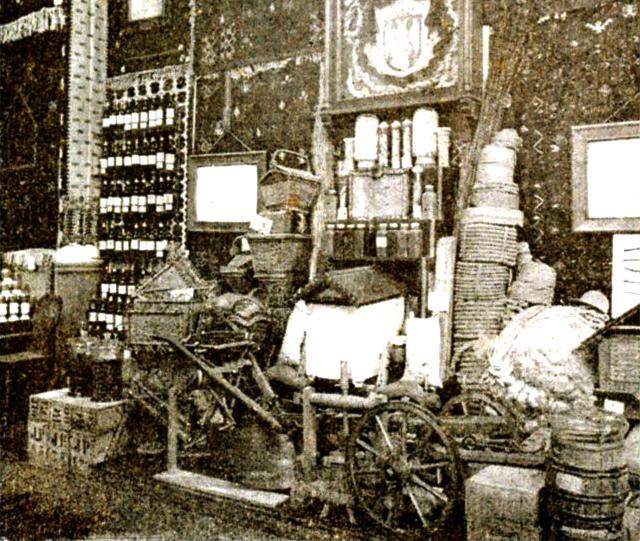
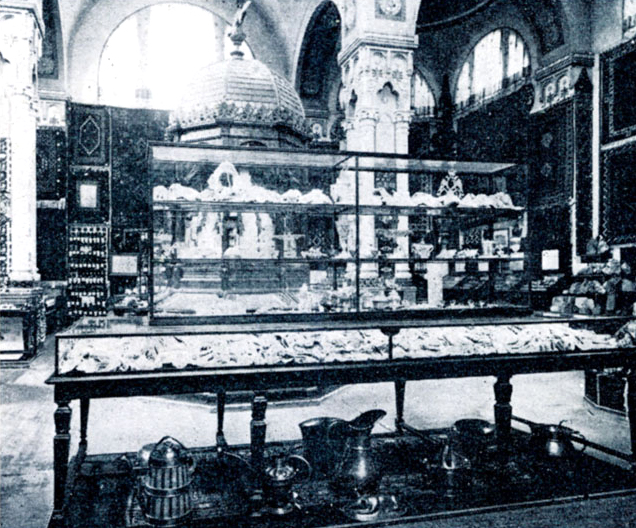 Photos of interior of Serbian pavillion,1900
Photos of interior of Serbian pavillion,1900
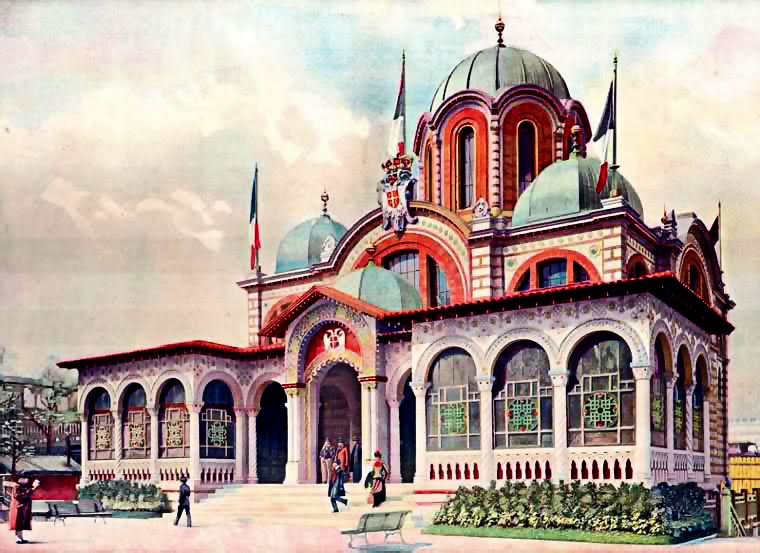
Serbian pavillion at 1900 Paris Exposition
Most of the artwork after the Paris Exposition was transferred to the National Museum of Belgrade. Unfortunately, for some reason, the illustrations and sculpted models of the grapes did not get there. We know with certainty that Kutlik's illustrations of Prokupac, Smederevka and Začinak were sent to Viticultural & Fruit-growing School in Bukovo near Negotin (East Serbia). It can be reasonably assumed that Ubavkić's sculpted models followed the same path.
In Paris again
The pictures did not stay for a long time in Bukovo, near Negotin. Soon, as luck would have it, they set off for Paris again. When Pierre Viala, a professor of agronomy in Paris and a world-known ampelography expert, with his colleague Victor Vermorel launched a major project to assemble information about all known grape varieties, he approached the principal of Bukovo School to ask for assistance in providing descriptions and data on Serbian grape varieties. This was almost certainly mediated by Milutin Savić, an acquaintance of Pierre Viala and a Serbian representative in the International Ampelographic Commission. As Milutin Savić has long since fallen into oblivion, I cannot but mention here that he was the best reputed Serbian oenologist and agronomist, head of the Ministry of Economy, senior president of the Serbian Agricultural Society and editor-in-chief of Težak magazine. His merits include a thoroughly designed uncompromising fight against phylloxera and an initiative to establish Bukovo school, of which he was the first principal.
In the first years of the twentieth century, a text was written with detailed descriptions of Skadarka, Začinak, Prokupac, Smederevka, Bagrina and Plovdina. In addition, short extracts on numerous other varieties have been written. Of particular interest to our quest is the fact that school staff remembered Kutlik's paintings. In order to accomplish the assignment adequately, Kutlik's student, the priestmonk Rafailo Momčilović from monastic fraternity of Bukovo painted illustrations of Skadarka, Bagrina and Plovdina at the school. Priestmonk Rafailo Momčilović was a theologist and erudite who left his mark on Serbian art, both ecclesiastical and secular. Among his numerous works of art, it is worth noting his iconostases made for Rakovica monastery and Ružica church, as well as impressionist landscapes often presented at exhibitions in the interwar years.
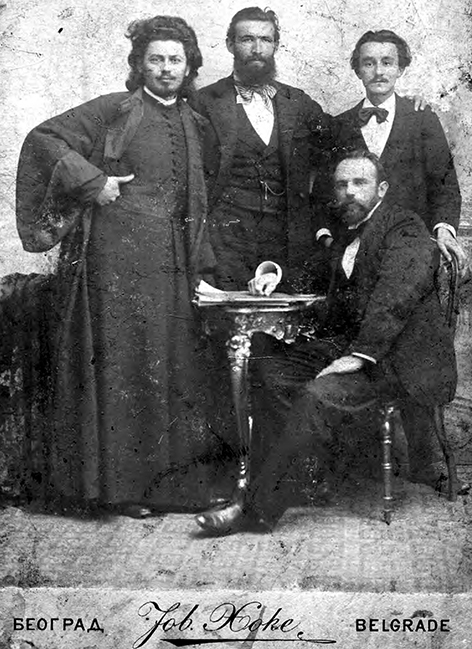 Cyril Kutlik seated, monk Rafailo Momčilović standing, first to the left, Belgrade 1898
Cyril Kutlik seated, monk Rafailo Momčilović standing, first to the left, Belgrade 1898
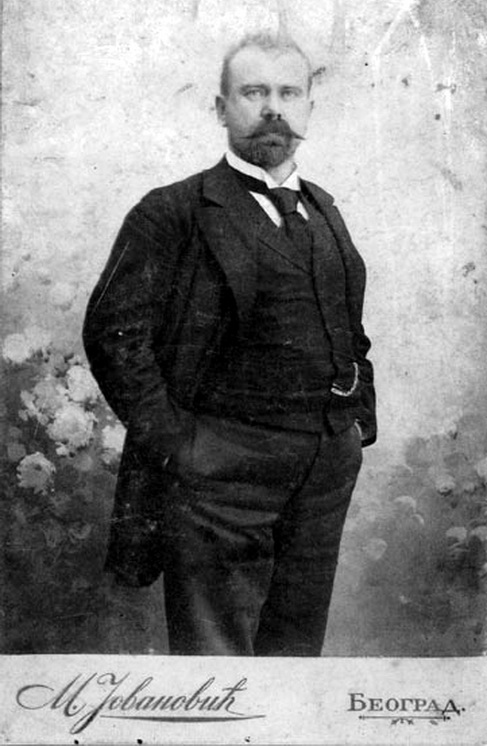 Petar Ubavkić, sculptor
Petar Ubavkić, sculptor
Lost forever
School principal Pavle T. Todorović sent to Pierre Viala all six illustrations with descriptions. If we rely on priestmonk Rafailo's memories back in 1930, it can't have happened before 1907, because he wrote in a letter that he remembered seeing them at school at the time. There are indications that plaster sculptures made by Petar Ubavkić were also sent at the same time. The illustrations apparently haven't been returned or displayed in Viala's famous Ampelography. Not a single image of Serbian grapes has found its place among nearly 600 color illustrations. Maybe the illustrations, regardless of their quality, just didn't fit Viala's concept of the entire project. The importance of Serbian varieties in global perspective, as he saw them, did not go beyond academic significance. And maybe the illustrations were sent with delay, because 5 volumes of the Ampelography (exactly those which contain illustrations) had already been published in 1905. The first and last volumes, published in 1909 and 1910, do not contain engravings of this type. And only in these two volumes do we come across the name of Pavle T. Todorović, mentioned among external contributors (T. Todorovitch).
Kutlik's relatives in Bratislava were not aware of the fate of the illustrations. When Cyril's cousin contacted in 1930 priestmonk Rafailo, who resided in Bođani monastery then, a letter was forwarded on the same day to headmaster of Bukovo school asking about any info concerning the illustrations. The negative answer immediately followed: illustrations are not in Bukovo. The latter reply of Father Rafailo addressed to Felix Kutlik dated February 4th, 1930 is therefore the last piece of information about the missing illustrations.
Whatever the reasons, the fact is that Pierre Viala did not publish Kutlik and Momčilović's illustrations. By all accounts, he did not even return them. It seems that Paris, the reason why the illustrations were created, has also become their final destination. Unfortunately, Serbia remained forever deprived of the earliest painted images and sculptures of Prokupac, Začinak and Smederevka dated 1899, which were reportedly "very beautifully and realistically made". We can equally mourn for the loss of illustrations depicting Skadarka, Bagrina and Plovdina painted a few years later by the efforts of priestmonk Rafailo. We have lost a unique opportunity to know the accurate shape of cluster, berries and leaves of our autochthonous grape varieties at the end of the 19th century.
(Aleksandar Fotić)
________________________________________________
Bibliography:
Težak LI, 46, Težak XXXI, 6, Težak XXXIX, 3; I. Paštrnakova "Kiril Kutlik, osnivač Srpske crtačko-slikarske škole i njegovo delo u Srbiji"; I. Paštrnakova "Kiril Kutlik i František Nekvasil - zaboravljena imena iz kulturne istorije Smedereva"; N. Simić "Petar Ubavkić"; L. Trifunović "Učešće Srba na Svetskoj izložbi u Parizu 1900"; Exposition universelle internationale de 1900 a Paris. Rapports du jury international, Group X, Aliments; Exposition Internationale Universelle de 1900. Catalogue General Officiel; P. Viala, V. Vermorel, Ampelographie,Traite general de viticulture , vol. 1-7

Tomislav Ivanović
Awarded wine writer, wine critic and contributor to selected wine magazines. WSET3-certified author and editor-in-chief of www.vinopedia.rs. Member of Vojvodina Sommelier Association. Juror in national and international wine competitions. Lecturing about wines of Serbia and the Balkans. Local partner of Wine Mosaic organization. Co-founder of International Prokupac Day.

Pročitajte i druge članke iz ove rubrike:
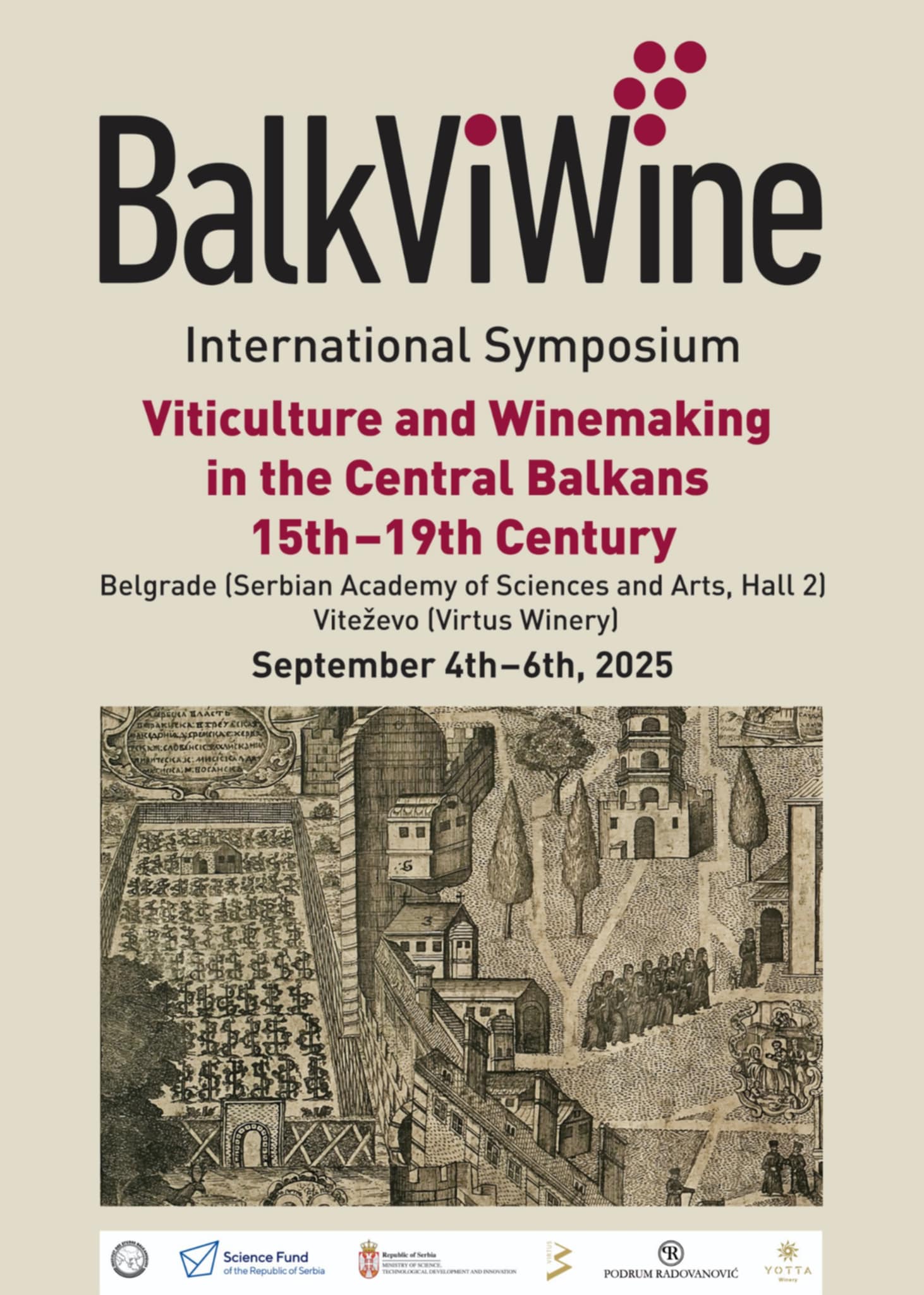

BALKVIWINE 2025 BEOGRAD
PROČITAJ VIŠE
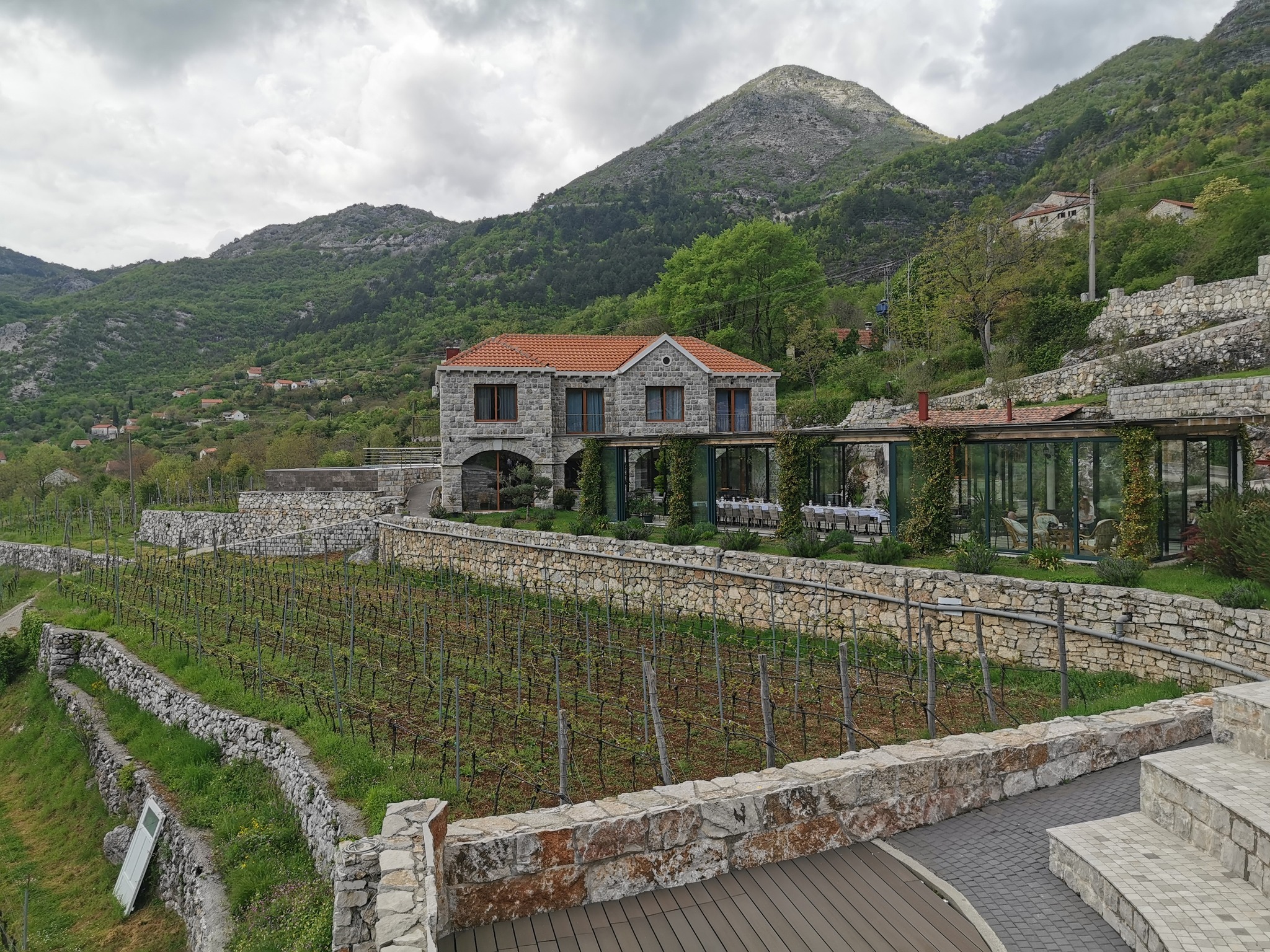

KRATOŠIJA PROBUDILA CRNOGORSKE VINARE
PROČITAJ VIŠE
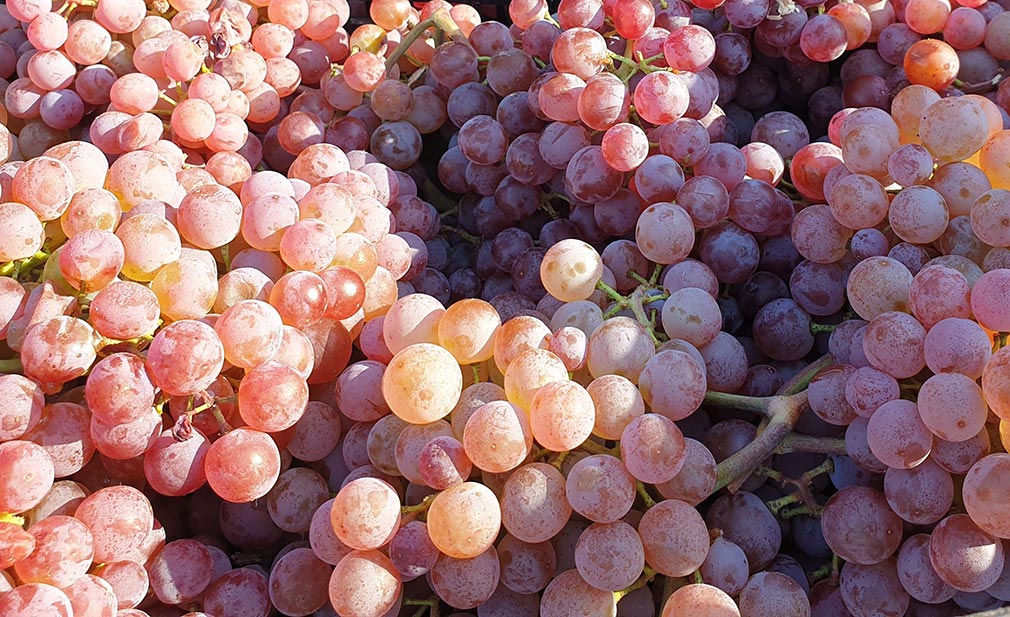

VINOPEDIA TOP 10 2024
PROČITAJ VIŠE
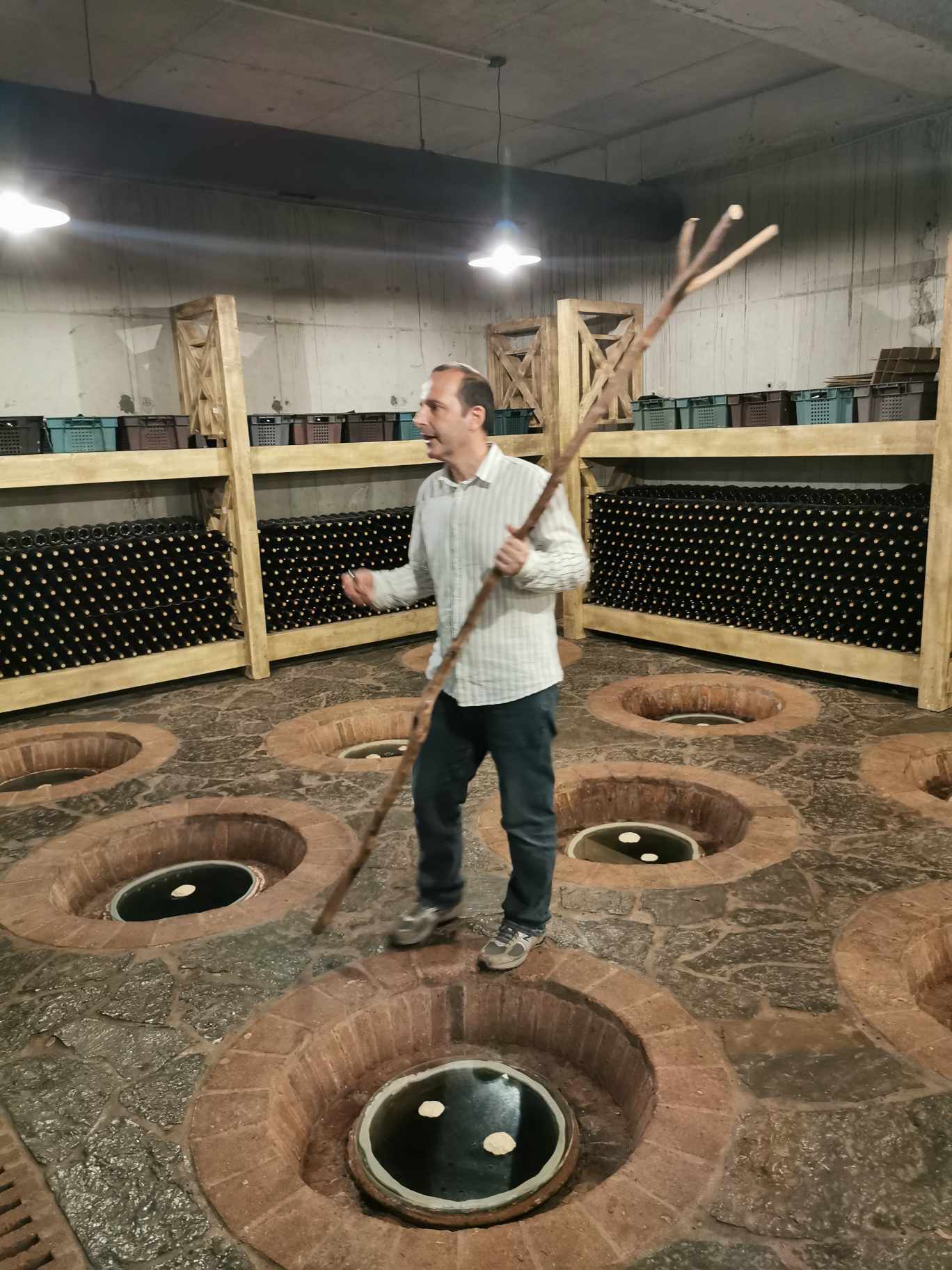

GIUAANI - VINSKI TURIZAM NA GRUZIJSKI NAČIN
PROČITAJ VIŠE


SPASIMO STARE VINOGRADE SRBIJE
PROČITAJ VIŠE
Winner MILLESIMA BLOG AWARD 2016

Pobednik MILLESIMA BLOG AWARD 2016
VINO & FINO wine personality of the year 2016

VINO & FINO vinska ličnost godine 2016